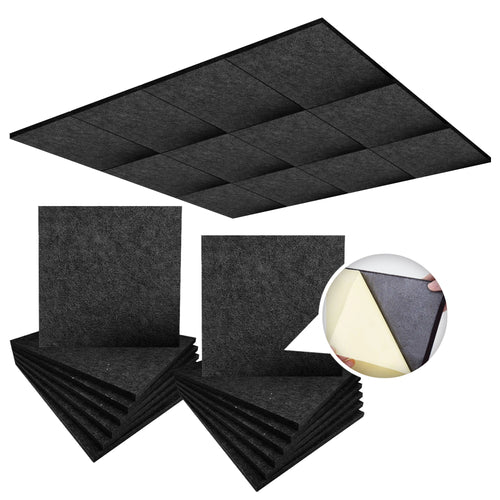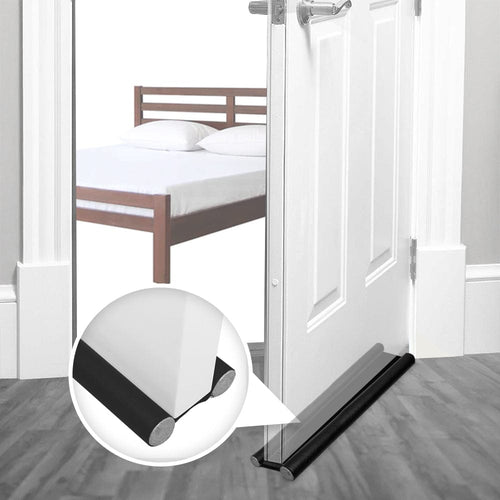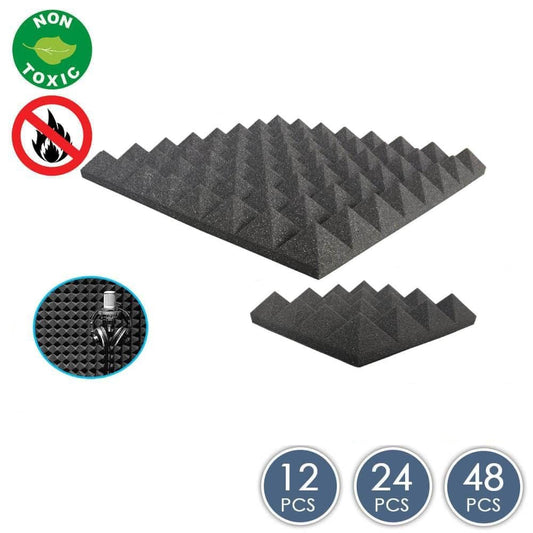
Sound quality is primarily dependent and differs concerning the environment. Whether it’s a small enclosed space where you watch your latest Tv shows or the one where you would host Friday night parties, or even those where you have your musical recordings, there shouldn’t be echoes or vibrations in the surroundings. Optimizing the sound quality in a room is, therefore, a role player in reducing noise, with the choice of foam being an essential consideration. The ultimate goal is to reduce the number of reflections in a wide range of frequencies and, so, a fairly high-density material that is firmer, durable, possesses higher levels of fire resistance, and has a different structural composition is preferred.
Difference between acoustic and regular foam

Featuring a specialized and tailored product design, acoustic foam panels, commonly referred to as soundproofing foam or sound absorbing foam, are available in a high range of color, thickness, patterns, etc. They are applicable across a wide range of frequencies. The regular foams dampen only a specific range of frequencies including those that are too high. For a person who rarely deals with the means to acoustic treatments, acoustic and regular foams might appear the same thing essentially. Still, some crucial points of difference exist that impact their durability, performance, cost, etc. Below are the points of comparison between an acoustic and a regular foam!
1)Firmness
The most pronounced difference between them is the firmness of the soundproofing materials. Letting them refrain from echoing and reverberating and dampening them throughout, acoustic foams are made of extremely soft and porous materials that absorb maximum sound waves. With the acoustic foams being typically denser than the standard foams, these are prepared for optimizing sound quality in any given area. On the other hand, regular foam is not constructed with sound absorption in mind. Hence are pliable and lightweight!
2)Durability
Being a tough and resilient material, the acoustic foam has to be made of durable choices. Being subject to greater stress, wear, and tear, when placed in theatres, recording rooms, etc., the foam’s strength and endurace make it a desirable material for recordings. The regular foams, on the other hand, are less durable and more prone to wear and tear over time. These are not designed with firm resistance in mind.
3)Structural composition
The molecular structures of the acoustic and the regular foam are different. It is how these molecules couple together and are structurally arranged, that determines the structural composition of the foam type. Be it acoustic or regular foam, every material got its intrinsic properties with the structural arrangement of the molecules therein. For instance, acoustic foams are made of dense polyurethane or extruded melamine. On the other hand, regular foam is made of thin viscoelastic polyurethane or polyester.
Choose the best soundproofing solutions

Acoustic foams are the best soundproofing technique and should be preferred over the regular form for maximizing the effects of sound absorption. These should be installed to reduce noise pollution by dampening the echoes and background sounds. Minimizing the reverberation effect, acoustic foams prevent noise from traveling through the walls and are worth an investment if you want to attenuate airborne sound waves.
























